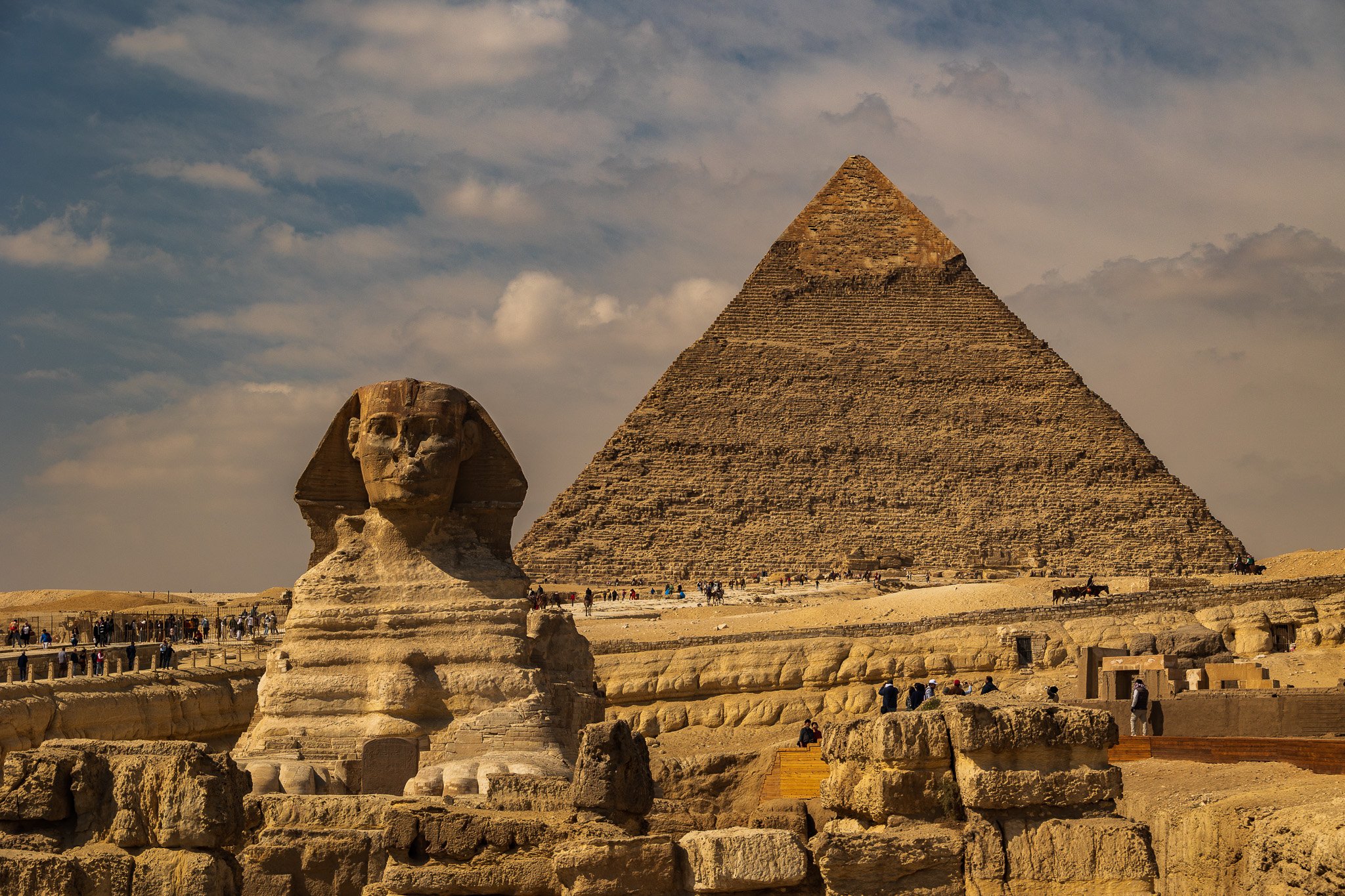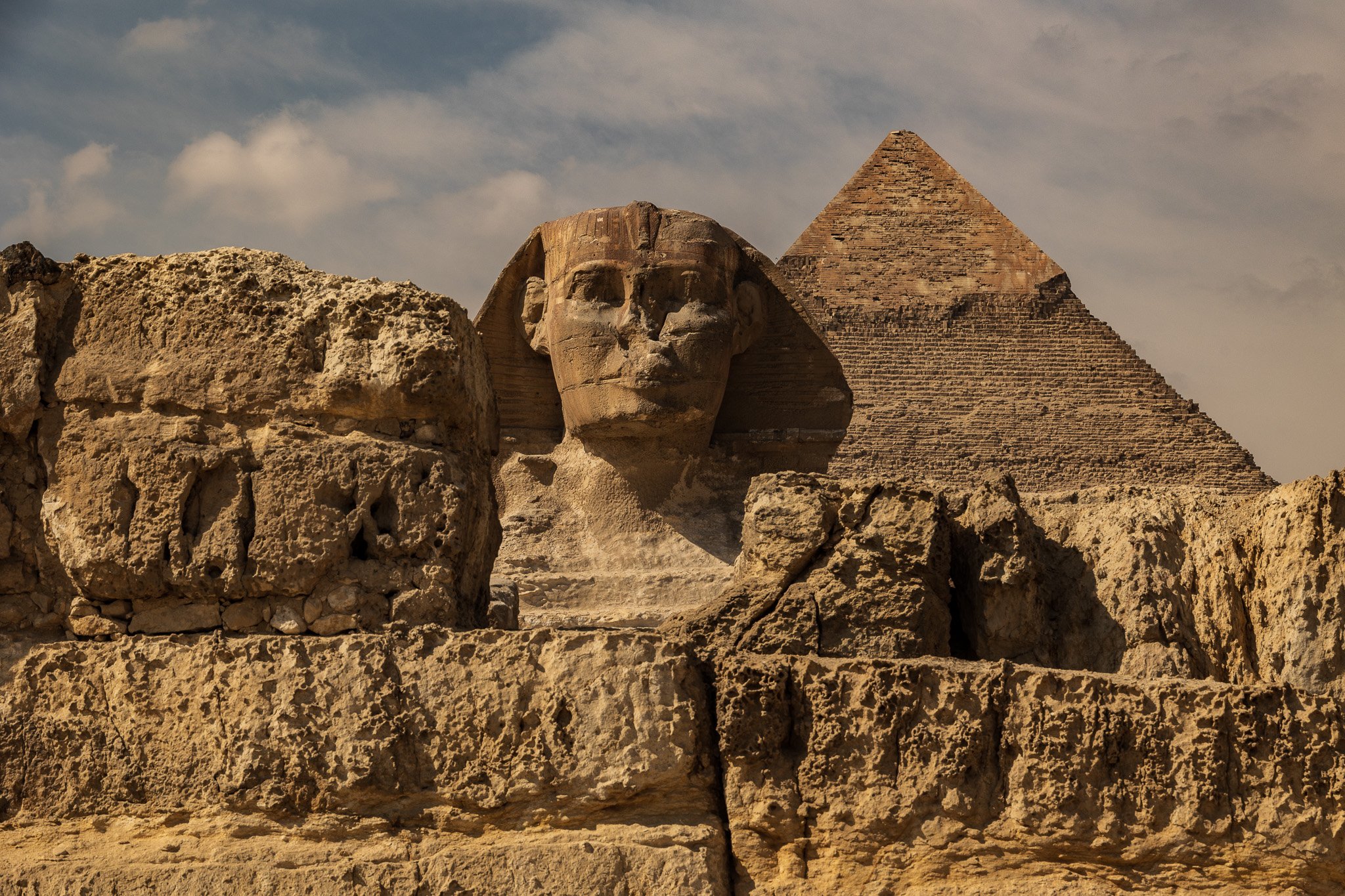Upon concluding his exploration of the pyramids, Karl recounted, "The camels were waiting for us, and on reaching the bottom again after a very tiring climb, we mounted the animals and rode over the sand down a slight incline to the Sphinx, some 100 yards away. This is made of solid rock, and stands over an old temple, which is now hidden by the sands, which are continually shifting and is about 150 feet high. The face is all chipped and scaly, and one of the ears, as well as part of the nose is broken off. All around are what seem to be deep wells, but what really are old tombs of priests and high officials of ancient Egypt."
While my experience at the pyramids was disappointing, the encounter with the Great Sphinx was captivating.
The Great Sphinx, a colossal sculpture measuring 240 feet (73 metres) in length and 66 feet (20 metres) in height, is among the world's largest. Combining a lion's body with a human head adorned with a royal headdress, the statue was meticulously carved from a single piece of limestone over an estimated three-year period by a workforce of 100 using stone hammers and copper chisels. The Sphinx is not just a sculpture, it’s part of the larger funerary complex with the pyramids.
Today, the body has suffered the most erosion; the face has also been damaged, as noted by Karl, and its nose is notably missing. The great myth is that the damage was caused by Napoleon’s troops, who shot off the nose with a cannon. But photographic evidence of the Sphinx indicates the nose was gone long before, and the theory is that a Sufi Muslim mutilated the statue in the 14th century to protest idolatry.
Evidence of its original vibrancy remains in pigment residue, revealing a once-painted masterpiece—the body and face adorned in red, the headdress gleaming yellow, and the beard coated in blue. Karl's account in 1901 highlighted the shifting sands, burying the Sphinx up to its shoulders for millennia. The efforts led by Egyptian archaeologist Selim Hassan in the late 1930s successfully freed the statue from its sandy shroud.
Below the Sphinx lie access tunnels leading to large natural caves, including two rectangular chambers about 25 feet deep beneath its paws. Those colossal paws, towering twice my height and longer than a city bus, left quite an impression.
In revisiting Karl's exploration, the Sphinx stands as a resilient testament to time, revealing the marks of history and the enduring intrigue of this colossal sculpture.
If you are new to the Karl Chronicles, get caught up on our expedition around the world! Start here 150 highlights from 150 Chronicles
Then get caught up on the rest of our journey, click here for more Karl Chronicles
The Karl Journey is now registered as an official expedition with the Royal Geographical Society










